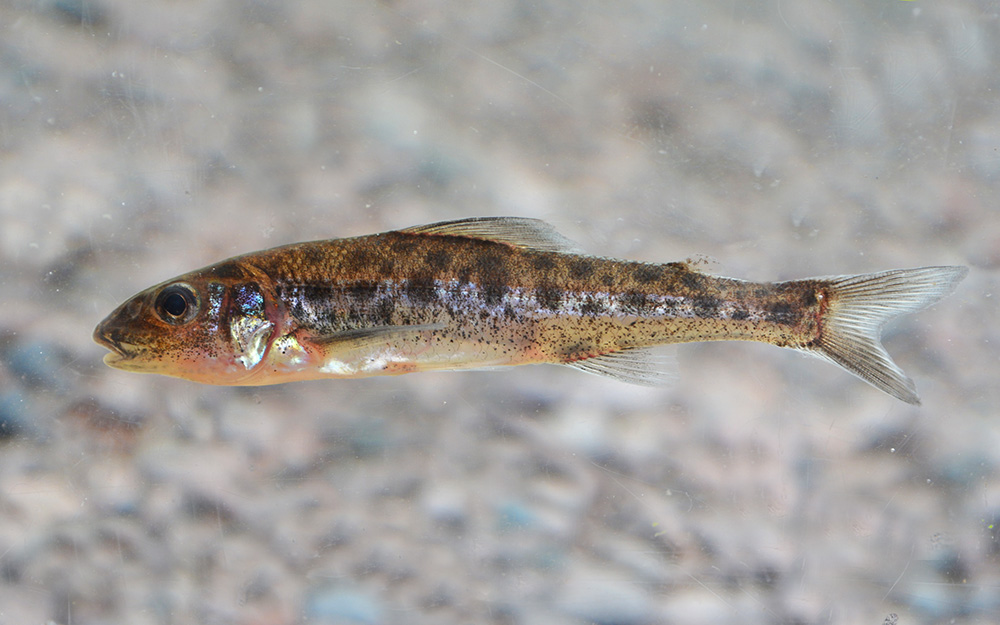Trout-perch
(Percopsis omiscomaycus)

Classification
General data
Percopsis omiscomaycus also known as the trout-perch, the grounder or the sand minnow, is one of two species in the family Percopsidae. They are freshwater fish that prefer clear to slightly turbid water. They are most often seen washed up on beaches and are rarely seen alive or correctly identified. They are found in rivers and lakes throughout North America.
Its name comes from the Greek root words perc, meaning perch and opsi meaning appearance. The species name omiscomaycus is thought to be derived from a Native American word meaning trout. The trout-perch possess characteristics similar to both the trout and the perch.
They are an important source of food for many predator fish such as walleye, northern pike, and lake trout.
They are a generally small fish found in deep waters by day, but which migrate to shallower waters at night. They are not a major human fishery, but are occasionally used as a bait fish.
Description
The trout-perch has been found at sizes of 20.0 centimetres (7.9 in) total length and the average total length is 8.8 centimetres (3.5 in). There are no distinguishing characteristics between males and females. They are overall silvery or nearly transparent in appearance with rows of dark spots on along the sides of their bodies both along their lateral line and above it. Their fins are almost entirely transparent. These fish have thick bodies with a long head, long snout, and a small mouth. They have a single dorsal fin containing 1–3 spines and 10–11 soft rays. They also have an adipose fin, similar to trout, which helps to distinguishes them from their look-alike species, the yellow perch and the walleye. Their tail or caudal fin is forked. Like most bony fish, the trout-perch has thin, flexible plates of bone or leptoid scales. Their particular leptoid scales are ctenoid scales that are similar to the perchs.
Distribution and habitat
The trout-perch is found throughout North America, from Canada and Alaska to the Potomac river basin in Virginia. They are found in the Great lakes making them present in Illinois, Indiana, Michigan, Minnesota, New York, Ohio, Pennsylvania and Wisconsin. They are also found in the Mississippi River Basin which extends its range to include: Iowa, Missouri, Kentucky, Tennessee, Arkansas, Mississippi, and Louisiana. They have also been spotted in North Dakota, Montana and West Virginia.
Trout-perch prefer clear to slightly turbid water with sandy and gravely bottoms. They avoid shallow soft-bottomed areas. They participate in a daily migration, traveling from deep water during the day to shallow waters at night. This behavior is not only very important to their predators; the walleye, the northern pike, and the lake trout, but also in transporting nutrients in thermally stratified lakes. The nocturnal migration allows for foraging under the cover of night. The trout-perch feeds on a variety of small invertebrates including insect larvae and crustaceans. Juveniles feed on zooplankton. Larger adults will eat small fish such as the johnny darter.











